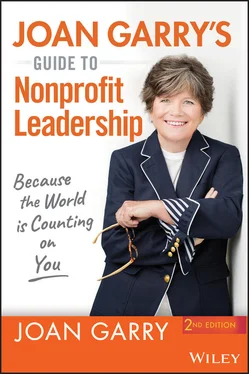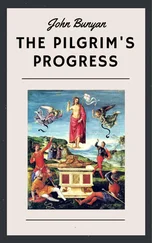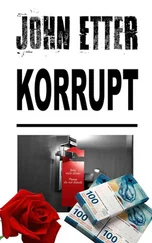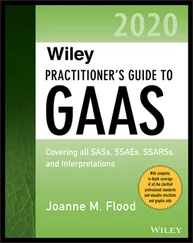I felt ever so well equipped with my financial skills, my management skills, and my understanding of how to manage a budget and to deliver results.
I had never met “messy” like this until the day I sat down at my desk at GLAAD, one of the largest gay rights nonprofit organizations. Or so I thought.
Actually, GLAAD was large by reputation, but “large” was not the first word that came to mind when I saw that we had $360 in the bank — that was not at all the word that came to mind.
It was bad. And I'll admit it here — I felt like a bit of a fraud, soon to be unmasked as having neither the grit nor the skills to dig us out.
There was one very bad day the first week on the job. I remember it well.
I was at my computer, writing a solicitation letter to a lapsed donor — trying everything to drive cash in the door. I was pleased with the letter. I sent it to print on the serviceable printer, reviewed it, found a typo.
And with that I burst into tears. It may have been my predicament, but I think it was singularly focused. I knew we could not afford to reorder letterhead.
Then there was this other day.
I was in Los Angeles meeting with donors (and praying they would pick up the tab) when my phone rang. It was my Deputy Director in New York. He calmly said that it might be time to look for office space he knew we couldn't afford.
There was an inch of snow on his desk when he arrived for work.
Very very messy.
I'm not sure I knew what to expect when I left corporate America for this job. Not sure I did a lot of thinking. My move from the corporate world to the nonprofit world was more of a “heart” move than a “head” move.
I was not unhappy in the corporate world. Hardly. I’d hit the corporate jackpot. In my first job out of college, I landed on the management team of MTV.
Yes, working at MTV in the early ’80s was just as cool as you can imagine. I also learned a ton. I learned about the pace, intensity, and thrill of being a part of a startup (more on that later). I learned how to innovate when I wrote the business plan for the MTV Video Music Awards. And my Harvard MBA boss bought me an HP12c calculator (the calculator that allows people to assume you have an MBA) and taught me about budgets and balance sheets.
From MTV I moved to Showtime Networks. There I became a very good manager of people. I became a team player. I learned what it meant to be a good corporate citizen as one of the early gay poster children when Showtime began to walk the walk on diversity. We gave money to worthy causes, and I found myself in the early ’90s advocating for corporate sponsorship dollars from Showtime to gay organizations.
While there we built a new business, a now‐dinosaur that we called pay‐per‐view. And it was there that I learned about boxing.
Yes, boxing. Like that thing big sweaty guys do with gloves on in rings.
I learned that people pay a lot of money to watch boxing on TV. And that if you get really good seats at the MGM Grand Hotel in Las Vegas, the flying sweat … well, it flies.
The most important gift Showtime gave me was the recognition that I had a voice. I became another kind of poster child — essentially an employee advocate for better communication and transparency from the senior leadership. This work, which included hosting a full staff (800) town meeting, was transformative.
I found my voice as an advocate for the employees at Showtime.
I found my wheelhouse.
Now what? I had no idea. I just knew a change was in the offing.
There was no Aha! moment for me. There was just a conversation. My now wife but then spouse, partner, longtime companion, (enter other euphemisms here) came home from work and told me that the executive director job at GLAAD was open.
I casually remarked, “You know, somebody like me ought to have a job like that. We have three kids, I drive a minivan, and we really do have a white picket fence. That would shake up America's picture of a gay rights activist, huh?”
Eileen, who knows how to shake things up in just the right way, casually responded to my casual remark, “Well then somebody like you should apply.”
I never in a million years thought they would hire me. I had no nonprofit experience, and I had never asked a soul for money before.
So they hired somebody like me. A lot like me. So me it was me. As my good friend Amy says, “Well slap my fanny!”
I guess I should have asked more questions before I took the job. That said, it probably would not have mattered. The Board didn't know either. The GLAAD brand may have been big but the problems were way bigger. I impressed myself with a tough salary negotiation that proved meaningless because all they could afford to pay me was $360. But just a one‐time payment. That was the sum total in the GLAAD bank account.
How did I manage? Well, nobody handed me a book — that's for sure. I don't even remember anyone telling me that everything was going to be OK. It was my job to tell everyone else that everything was going to be OK.
There was so much I didn't know. Like everything it seemed.
I wish there had been a book — one with practical advice about how to untangle this mess, written by someone who had stood in my shoes, written by someone who would be my advocate, help me realize that I was not alone, and maybe even make me laugh that I was sobbing over a piece of stationery.
So I decided to write the book I wish someone had handed me.
Because my experience as a nonprofit leader and then as a board member and major donor and today as the principal in a nonprofit consulting practice has taught me a great deal that I believe will help you as a nonprofit leader become more effective at your job and remind you of the joy you can find in being underpaid and overworked to save even the smallest part of the world.
Maybe you are wondering how I untangled the knots at GLAAD without a book. ☺
We did indeed dig out. I left the organization eight years later with a $1.5 million cash reserve, an $8 million budget and a staff of over 40. But that's not what counts.
We made an impact. Long before marriage equality, GLAAD put same sex couples on the wedding pages of every major newspaper in America. Starting with the New York Times .
If you think there are too many gay characters on television, give it to me right between the eyes. Our work at GLAAD brought us there. If the name Matthew Shepard, the young gay man murdered in Wyoming in 1998, is familiar to you, it's because GLAAD shaped that into a national story, ensuring that any discussion about hate crimes be expanded to include sexual orientation, a lasting legacy for a young man from Laramie.
How did we do it?
The recipe is not unique to my leadership or to GLAAD. There are universal constants.
Between my own personal experience and working with hundreds of board and nonprofit staff leaders, these constants are critical to either digging out, stabilizing, or taking your organization to a place of even greater impact.
You need to rely on the strengths and power of those around you and see your varying stakeholder groups as a village, each with an important role to play in the success of your organization.
Then there is the mission. Your passion for it and your ability to articulate it, why it's important, and what impact it is having on the world. (I continue to be stunned by how infrequently leaders get this right.).You have to cultivate your storytelling skills, and in so doing, you will cultivate your fundraising prowess.
You have to recognize the skills and attributes of your staff and manage them with compassion and accountability (now that is a delicate balance). You have to be transparent and authentic with successes and with challenges. Recognize that you are slightly more like a tribe than a staff.
Читать дальше












